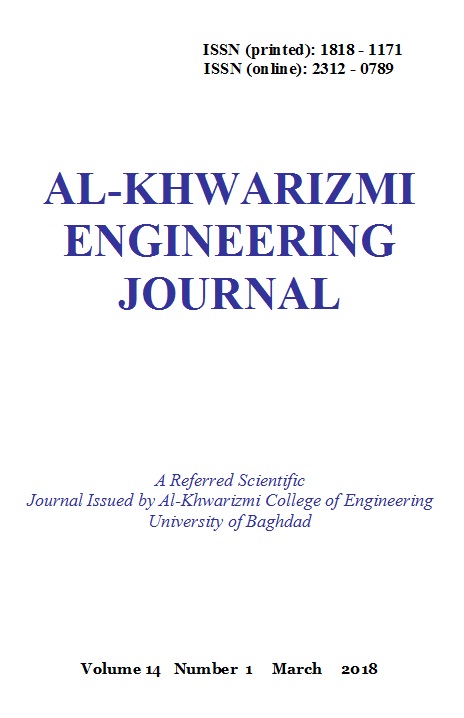Evaluation the Mechanical Properties of Kaolin Particulate Reinforced Epoxy Composites
DOI:
https://doi.org/10.22153/kej.2018.08.003Abstract
Epoxy resin has many chemical features and mechanical properties, but it has a small elongation at break, low impact strength and crack propagation resistance, i.e. it exhibits a brittle behavior. In the current study, the influence of adding kaolin with variable particle size on the mechanical properties (flexural modulus E, toughness Gc, fracture toughness Kc, hardness HB, and Wear rate WR) of epoxy resin was evaluated. Composites of epoxy with varying concentrations (0, 10, 20, 30, 40 weights %) of kaolin were prepared by hand-out method. The composites showed improved (E, Gc, Kc, HB, and WR) properties with the addition of filler. Also, similar results were observed with the decrease in particle size. In addition, in this study, multiple regression models were developed by utilizing (SPSS) package to predict the properties of kaolin reinforced epoxy composites. Good agreement was obtained between the predicted and the experimental results. The accuracy of prediction was (89.71%, 80.58%, 85.82%, 92.27%, and 94.49%) for E, Gc, Kc, HB, and WR, respectively.
Downloads
Downloads
Published
Issue
Section
License
Copyright: Open Access authors retain the copyrights of their papers, and all open access articles are distributed under the terms of the Creative Commons Attribution License, which permits unrestricted use, distribution, and reproduction in any medium, provided that the original work is properly cited. The use of general descriptive names, trade names, trademarks, and so forth in this publication, even if not specifically identified, does not imply that these names are not protected by the relevant laws and regulations. While the advice and information in this journal are believed to be true and accurate on the date of its going to press, neither the authors, the editors, nor the publisher can accept any legal responsibility for any errors or omissions that may be made. The publisher makes no warranty, express or implied, with respect to the material contained herein.
















